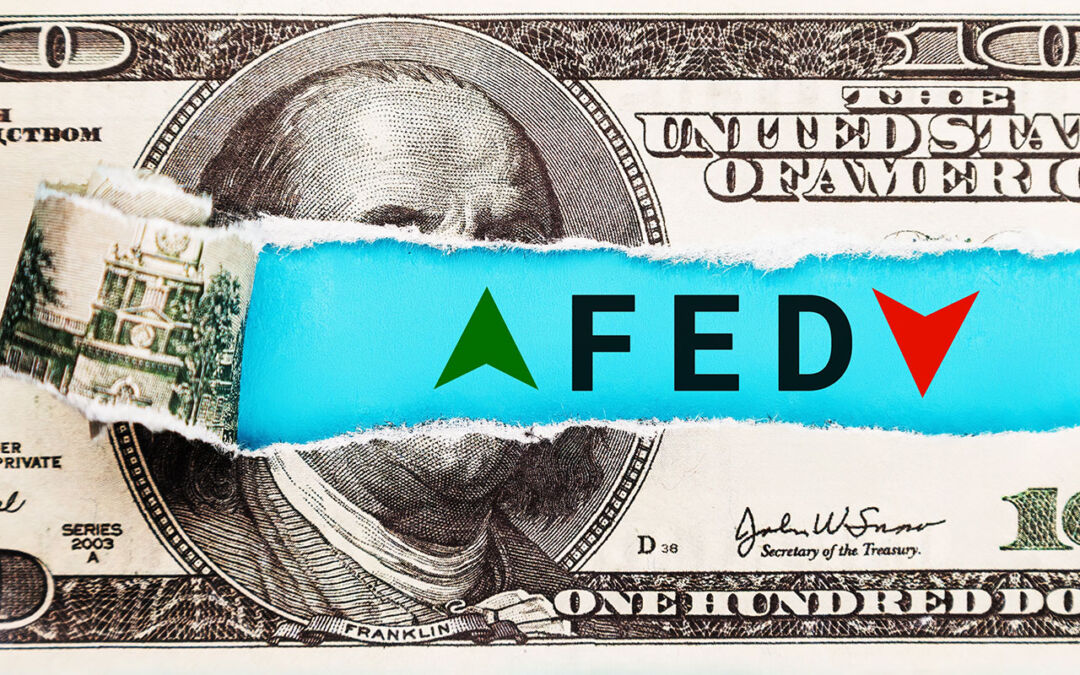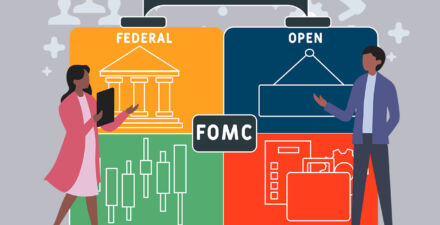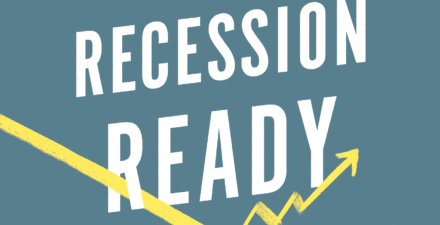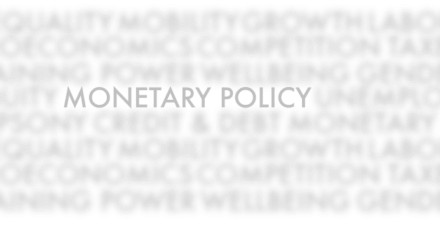The Fed is aggressively but perhaps deliberately playing catch-up on inflation

While there are legitimate fears that these rate hikes are coming too fast, even risking a recession, a recovery with higher inflation should not be surprising in the context of the full response to the COVID-19 recession of 2020. A key question going forward is whether the Fed could be playing catch up on inflation now as a necessary consequence of using a well-studied monetary policy response to recessions that occur when inflation and interest rates are very low.
Importantly, key research on monetary policy discussed in this column contextualizes current above-target inflation. This research suggests that the Fed was neither unable nor late to react to inflation, but was constrained by policy compromises required when inflation and interest rates are too low entering a crisis.
The Fed reacted slowly to the inflation reversal that began in October 2021, but its policy has followed a thin playbook for setting rates amid economic uncertainty and the legacy of very low interest rates over the past decade. The combination of low real interest rates (after accounting for inflation) amid the low inflationary environment that persisted for the decade prior to 2021 gave the Fed few options to respond to the negative shock of the COVID-19 pandemic beginning in 2020 and the subsequent short but extremely sharp recession that year.
After all, cutting rates by 5 percentage points or more, as in previous recessions, would have required strongly negative interest rates. The Fed’s monetary policy response to the COVID-19 recession of 2020 instead was to cut policy interest rates to zero, commit to holding rates low in the future (forward guidance, in central bank jargon), and keep a host of financial markets from seizing up. But 2022 has underscored the more subtle challenge that using the stimulus tools of a low real interest rate environment dictated that the Fed had fewer options to respond if inflation suddenly took off.
The Fed’s policy choices going forward will hinge on both how quickly inflation and so-called neutral real interest rates—rates that neither depress job growth nor stimulate inflation—fall and how quickly the new normal for each can be spotted. If the Fed can successfully communicate that it is following the research, there is little reason that interest rates need to keep increasing quickly, especially if inflation begins to peak in the coming year or so.
This column briefly examines recent U.S. monetary policy history, offers up some research that has been little-discussed that may already be very influential to the Federal Open Market Committee, and offers some lessons perhaps to be learned in the process by monetary policy researchers and policymakers alike.
Was the Fed slow to respond or practicing deliberate monetary policy?
As recently as the third quarter of 2021, U.S. COVID-19 cases and inflation were in steady decline, with the Fed’s preferred core Personal Consumption Expenditure measure of inflation nearing the central bank’s 2 percent target. More importantly, little evidence of a long-term shift in inflation was apparent. What followed was 12 months of high and volatile inflation readings that were not predicted by markets or the Fed. So, after months of waiting, the Fed acted aggressively in May 2022.
This slow-then-aggressive path of rate hikes drew outsized attention to arguments that the Fed was “behind the curve.” Yet this pattern of rate hikes follows directly from well-established monetary policy scholarship. Two key insights from this literature that are often missing from the discussion are:
- Monetary policy should rely on simpler rules and focus more on inflation than unemployment when monetary policy uncertainty is high.
- Monetary policy should respond more slowly and with more inertia when nominal interest rates start from low levels and monetary policy uncertainty is high.
Restraining from hiking rates in the early phases of inflation and reacting more aggressively once the emergence of inflation is more clear can be a prudent strategy when interest rates are close to zero. That is exactly where the Fed found itself over the past 18 months, but it can be difficult to identify this pattern looking backward.
The logic behind this policy is relatively straightforward. Because cash and other financial instruments blunt negative interest rates’ effectiveness, central banks face asymmetric risks when nominal interest rates are near zero.
Additionally, standard monetary policy rules, which the Fed uses as a guide to set interest rates, are defined assuming an inflation target and knowledge of steady-state unemployment and interest rates. When the steady states of unemployment and interest are ambiguous, the Fed can do better by instead moving interest rates in response to changes in inflation—a measure it can observe directly—rather than focusing on gaps between equilibrium interest rates and employment rates that depend on these estimated parameters.
In this framework, the past decade of nominal interest rates at or barely above zero makes the case for a slower-then-faster reaction to inflation—slowing the economy in 2021 risked recession and deflation. But, following the same literature, the Fed’s aggressive moves in the second half of 2022 are a consequence of the need to respond slowly to ambiguous signs of inflation in late 2021 and stronger signals of inflation in 2022.
Importantly, this response is not solely the result of low nominal interest rates, but the result of factors beyond the Fed’s control—low natural interest rates, which are essentially where the Fed is forced to set interest rates by long-run economic forces—and factors the Fed does control, namely its inflation target.
The monetary policy research upon which policymakers may well be relying
In the late 1990s and early 2000s, monetary policy research focused on sustained low inflation for the first time in generations and focused extensively on how the Fed should conduct monetary policy with low interest rates and amid uncertainty—precisely the state of the U.S. economy the Fed has faced since the pandemic. Among those researchers was John C. Williams, now head of the New York Fed and a vice chair of the Federal Open Market Committee, and not the only FOMC member to publish in this area.
Unfortunately, even as steadily declining U.S. unemployment and volatile inflation has validated the Fed’s use of tools from a relatively thin applicable playbook, some commentary questions the Fed’s credibility. Faced with pressure to retain credibility, the Fed has been hawkish in action and in communications for the past 6 months, and market measures suggest this has kept medium-term expectations closely in line with its 2 percent target rate of inflation.
The Fed may be strategically loathe to show too many cards, but Fed communications could have better foreshadowed its rate-hike path. Yet the good news is that as the need for catch-up rate hikes declines, so too does the downside to communicating this approach. Recent comments from FOMC members on possible pauses in rate hikes suggest the rate-hike path is following the catch-up trajectory prescribed by the near-zero and uncertain rates literature.
The value of racial and gender diversity at the Federal Reserve
September 16, 2021
In Conversation with Atif Mian
January 14, 2019
Lessons for setting future monetary policy
This spurt of inflation is not over, but even as it shows signs of easing in the coming year, the past 2 years present a challenge for the Fed’s policy framework and longer-term inflation targets. The political costs of high inflation to the Fed have been significant, suggesting that low inflation not only raises risks of deflation in the event of negative shocks, but also makes defeating inflationary episodes more politically costly for monetary policymakers than previously appreciated.
There are Fed credibility issues with moving to a higher inflation target without first reaching the 2 percent goal. Nonetheless, the inflation required to deal with the pandemic shock from a low interest rate baseline has left the case for moving beyond the 2 percent inflation target framework stronger now than it was before the COVID-19 pandemic and recession.
It’s too early for the Fed to discuss long-term strategy, but it’s not too soon for researchers and policymakers alike to begin improving on a framework that was delivering weak economic growth and rising inequality for a decade before the latest crisis.






